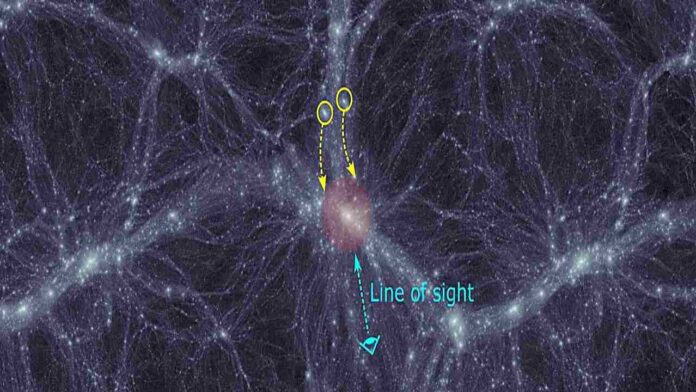In standard cosmological models, the formation of cosmological structures begins with the emergence of small structures, which subsequently undergo hierarchical merging, leading to the formation of larger systems. As the universe ages, massive galaxy groups and clusters, being the largest systems, tend to increase in mass and reach a more dynamically relaxed state.
The motions of satellite galaxies around these groups and clusters provide valuable insights into their assembly status. The observations of such motion offer crucial clues about the age of the universe.
By using public data from the Sloan Digital Sky Survey (SDSS), a research team led by Prof. Guo Qi from the National Astronomical Observatories of the Chinese Academy of Sciences (NAOC) analyzed the kinematics of satellite pairs around massive galaxy groups. The team’s findings suggest that the universe may be younger than predicted by the LCDM model with Planck cosmological parameters.
This study is published in Nature Astronomy.
The researchers investigated the movement of satellite pairs positioned on the opposite side of massive galaxy groups by using their velocity offsets from the central galaxy along the line of sight. They discovered a notable excess of pairs exhibiting correlated velocity offsets compared to pairs displaying anti-correlated velocity offsets.
“The excess of correlated satellite pairs suggests the presence of recently accreted or infalling satellite galaxies,” said Prof. Guo Qi, the corresponding author of the paper.

This excess was also found in up-to-date cosmological simulations but the magnitude of this effect was considerably lower than in observations. The significant discrepancy between the observations and simulations implies that massive galaxy groups are younger in the real universe.
“Since the age of the massive galaxy groups could be closely related to the age of the universe, these findings consequently suggest a younger universe compared to that derived from the cosmic microwave background (CMB) by the Planck Collaboration,” said Dr. Gu Qing, first author of the paper.
These findings present a challenge to the current cosmological model and may provide valuable insights into the Hubble tension problem.
Reference:
Qing Gu et al, A younger Universe implied by satellite pair correlations from SDSS observations of massive galaxy groups, Nature Astronomy (2024). DOI: 10.1038/s41550-023-02192-6
